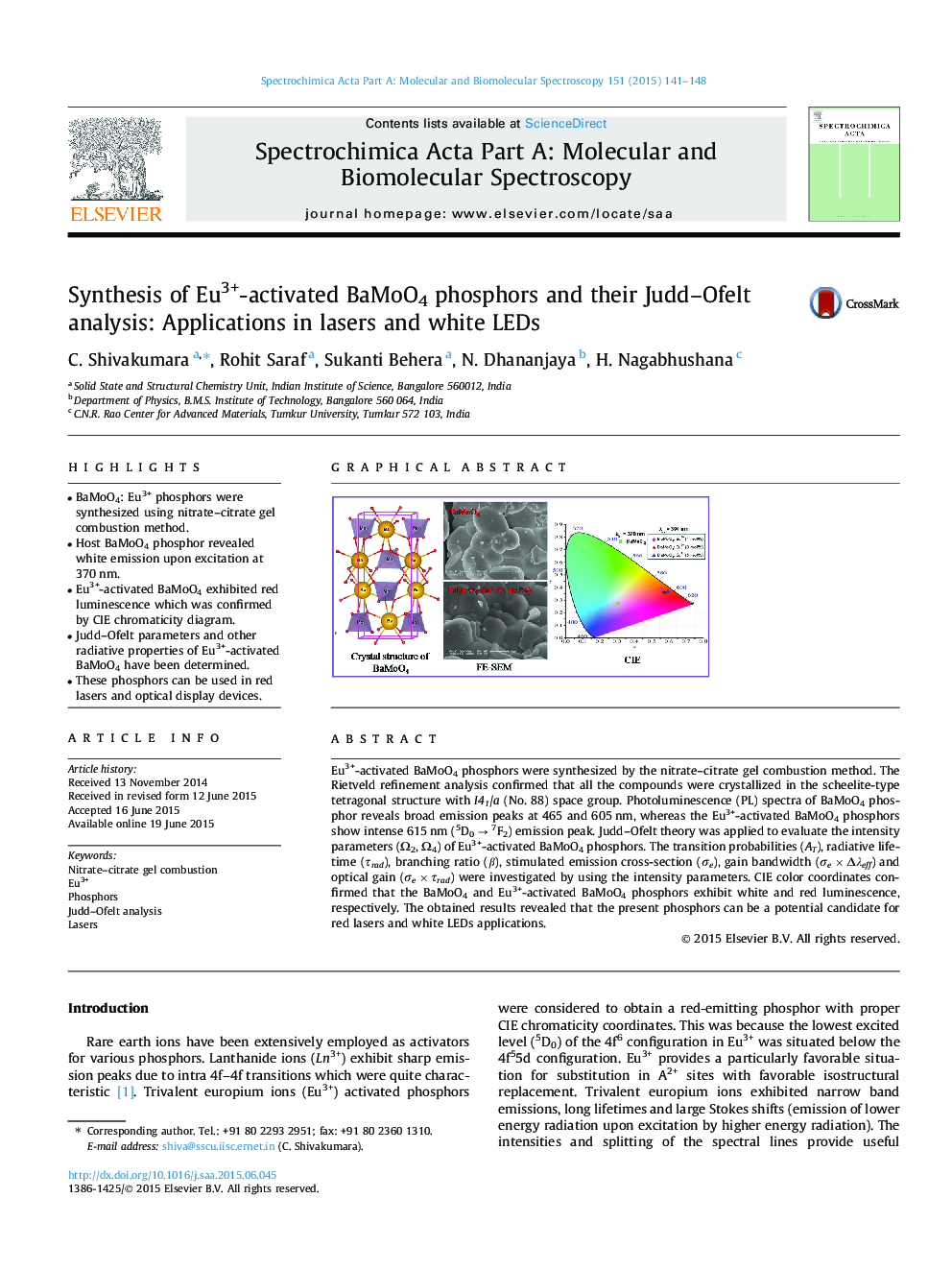| کد مقاله | کد نشریه | سال انتشار | مقاله انگلیسی | نسخه تمام متن |
|---|---|---|---|---|
| 1230064 | 1495218 | 2015 | 8 صفحه PDF | دانلود رایگان |

• BaMoO4: Eu3+ phosphors were synthesized using nitrate–citrate gel combustion method.
• Host BaMoO4 phosphor revealed white emission upon excitation at 370 nm.
• Eu3+-activated BaMoO4 exhibited red luminescence which was confirmed by CIE chromaticity diagram.
• Judd–Ofelt parameters and other radiative properties of Eu3+-activated BaMoO4 have been determined.
• These phosphors can be used in red lasers and optical display devices.
Eu3+-activated BaMoO4 phosphors were synthesized by the nitrate–citrate gel combustion method. The Rietveld refinement analysis confirmed that all the compounds were crystallized in the scheelite-type tetragonal structure with I41/a (No. 88) space group. Photoluminescence (PL) spectra of BaMoO4 phosphor reveals broad emission peaks at 465 and 605 nm, whereas the Eu3+-activated BaMoO4 phosphors show intense 615 nm (5D0 → 7F2) emission peak. Judd–Ofelt theory was applied to evaluate the intensity parameters (Ω2, Ω4) of Eu3+-activated BaMoO4 phosphors. The transition probabilities (AT), radiative lifetime (τrad), branching ratio (β), stimulated emission cross-section (σe), gain bandwidth (σe × Δλeff) and optical gain (σe × τrad) were investigated by using the intensity parameters. CIE color coordinates confirmed that the BaMoO4 and Eu3+-activated BaMoO4 phosphors exhibit white and red luminescence, respectively. The obtained results revealed that the present phosphors can be a potential candidate for red lasers and white LEDs applications.
Figure optionsDownload as PowerPoint slide
Journal: Spectrochimica Acta Part A: Molecular and Biomolecular Spectroscopy - Volume 151, 5 December 2015, Pages 141–148